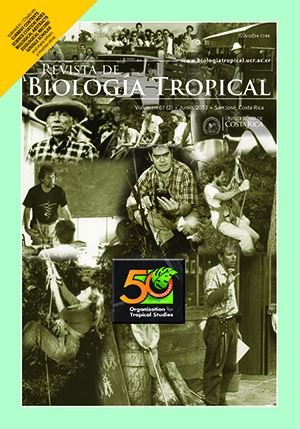Abstract
Metallothionein is a cytosolic protein found in a variety of tissues and have been involved in the regulation of essential trace metals such as copper and zinc, and in the detoxification of essential and nonessential metals. With the aim to study their seasonal variation and their possible role in reproductive behavior, we evaluated metallothioneins (Mts) in Perna viridis, taken from Rio Caribe and Chacopata localities in the North coast of Sucre state, Venezuela. A total of 325 samples were obtained from February to December 2003. We determined the following biometric indices in bivalves: Condition Index (CI), meat yield (RC) and dry weight-length relationship (PSL). Besides, Mts in whole tissue were separated by molecular exclusion chromatography, Sephadex G-50 and quantified by saturation with cadmium. Our results showed that the biometric indices (RC and PSL) had seasonal variations between localities and maturity stages, with the exception of IC. No significant differences were found between sexes. Mts showed seasonal variations between localities, with the highest concentrations between February and March, and minimum ones between September and December, coinciding with the respectively high and low productivity periods in the area. The mussels from Rio Caribe had higher Mts concentration than those from Chacopata. Furthermore, immature mussels showed the highest Mts concentration while the lowest was found in spawned specimens. We found a significant negative relationship between Mts and CI. Our results demonstrated that MTs in Perna viridis are influenced by the condition index and reproductive status, as well as physico-chemical factors in the marine environment.##plugins.facebook.comentarios##
Downloads
Download data is not yet available.






